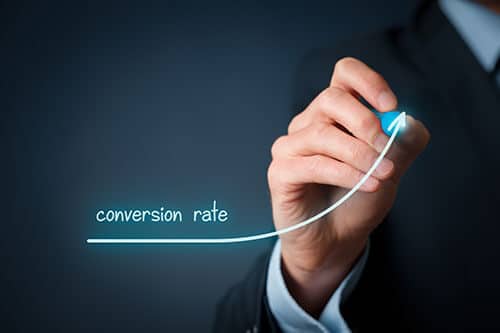20 KPIs for Local Digital Marketing Campaigns
As a business owner, you try to stay on top of every aspect of your company, including marketing. You are aware your online presence is as vital to your local brick and mortar business as it is for your web business. It drives much of your traffic and sales to both. The key is a robust digital marketing campaign. This can include strategies associated with marketing techniques such as SEO, social media sites, and paid advertising programs.
Knowing how each digital marketing feature affects your business is essential. The best way to keep track of how well your marketing campaigns are working is with KPIs or key performance indicators. KPIs are a set of visual measures of performance that help you see what is working best for your unique business needs. Monitoring KPIs gives you a clear picture of your digital marketing program’s return on investment (ROI), or how much money you are putting into your digital marketing tools versus how much you are getting back.
Here are 20 KPIs to keep track of to improve your local business’ digital marketing campaigns:
Conversion Rates
A conversion is any action a user takes to interact with specific web devices for your business, such as a website, social media account, or PPC marketing program. KPIs are critical for knowing the conversion rate across all your digital marketing programs including your website, social media accounts, paid advertising, and SEO.

1. New leads and prospects – Number of new leads or prospective customers in a given time period. Also, cost per lead generated.
2. Cost and average time to conversion – How much money per conversion and how long did it take to get the user to convert. Conversion rates vary per industry.
3. Retention Rate – This is the percentage of users that return to your website or customers that return to purchase your products, or use your services in a given time period.
4. Increase in referring links – Referral marketing is the process of promoting products or services to potential customers through recommendations. Referral links are exclusive to each customer and given out through rewards programs. Your customer is rewarded for referring your products or services to others with their unique referral link.
Website Traffic
A business website is a substantial part of your overall marketing program. If built well, it can drive up the percentage of traffic and sales, not only to your website but to your local business. Among other points, a few important KPIs for website traffic to keep track of are the numbers of both new visitors and returning users, and monthly traffic.

5. Returning visitors – You want users of your website to convert into loyal customers that continue to return to your site or local business location. Your KPIs can help you see what keeps bringing return visitors back. Are users coming back for your amazing incentive program, strong content, or a fast and easy way for customers to contact your local business?
6. New visitors – It’s a no-brainer that you want your website to consistently bring in new prospective customers. Keeping track of where new visitors are coming from, and what part of your website they are interacting with can help you to understand potential customers’ needs.
7. Monthly traffic – Also consider the average number of monthly traffic to your site. The more users on your website can mean more customers to your local business.
SEO
SEO or search engine optimization is a way to obtain a high ranking on a search results page (SERP) for search engines such as Google, Yahoo, AOL, and Bing. Your goal is to rank as high as possible to attract more online traffic.

9. Keywords in the Top 10 SERP – Keywords are specific words and phrases that searchers enter into search engines. Search engines find those words and phrases in your content and rank your website on search engine result pages in accordance to those and several other factors.
10. Organic Traffic – Traffic to your website from a search engine result page is organic traffic. These are users that find your site without paid referrals.
11. Inbound link to a website – There are basically three types of links in websites – internal links, outbound links, and inbound links. An internal link is a link to another page or content within the website. Outbound links take the user to another place on the internet, often to another website. An inbound link is a link in another website that sends the user to your website. Having quality inbound links from somewhere else to your site can increase your SEO ranking, and increase your referral traffic.
PPC
Pay per click advertising is a paid advertising technique used to drive traffic to a website. You pay only when someone clicks on your ad. Search engine advertising is a popular form of PPC. Several networks allow you to run PPC ads. One of the most popular is Google Adwords.
Some of the KPIs for PPC ads include:
12. Cost per click (CPC) – Cost per click is basically the amount of money it costs you each time a user clicks on your ad. The cost of a PPC campaign is based on the keywords used. Running an ad with more common keywords will cost you more money per click because of the amount the keyword is used in a search. Most PPC ad programs can be cost-controlled by setting a budget of how many clicks your company will pay for.
13. Cost per conversion (CPCO) – Cost per conversion is the amount your PPC ad costs per number of users that convert from your PPC ad.
14. Click through rate (CTR) – According to Google Support, “a click-through rate is the number of clicks that your ad receives divided by the number of times your ad is shown.”
GMB
GMB, also known as Google My Business, is a free marketing tool offered by Google for listing your local business information online. On a GMB page a user can find where your local business is located, and other pertinent contact information including phone numbers, email addresses, business hours, and a link to your website and social media accounts. For the business owner with your GMB advertisement, you can track conversion metrics of users through your local online listing. Some of these metrics include:

16. Directions – Users can obtain driving directions to your local business through GMB listings. Adding high-quality images of your brick and mortar store can help increase foot traffic.
17. Visits to the Website – On your local listing site you can add a link that goes directly to the main landing page on your business website.
18. Discovery searches – A discovery search is when a non-specific category, product or service keyword is put into a search engine. When the keyword matches words or phrases on your GMB ad, your local listing will appear on the search engine page.
19. Direct Searches – When a generic brand name or location-specific keyword or phrase is entered into a search engine this is called a direct search. This type of keyword could be the name of your business or a search of the town your business is in.
20. Google Map Views – With your business ad on GMB, a customer can find the location of your local store or office building using Google maps.
You can track the number of map views, and other conversion techniques from your local listing with the GMB metrics tools.
Digital Marketing Campaigns
Along with the list mentioned here, there are many different types of key point indicators that can help you to determine which marketing technique works best for your business. Your business and the industry you are in will have a unique set of KPIs that work best. The same holds true for your marketing program. Keeping track of the KPIs that work for your business and industry, will help you create a strong business marketing campaign to bring traffic and sales both locally and online.



